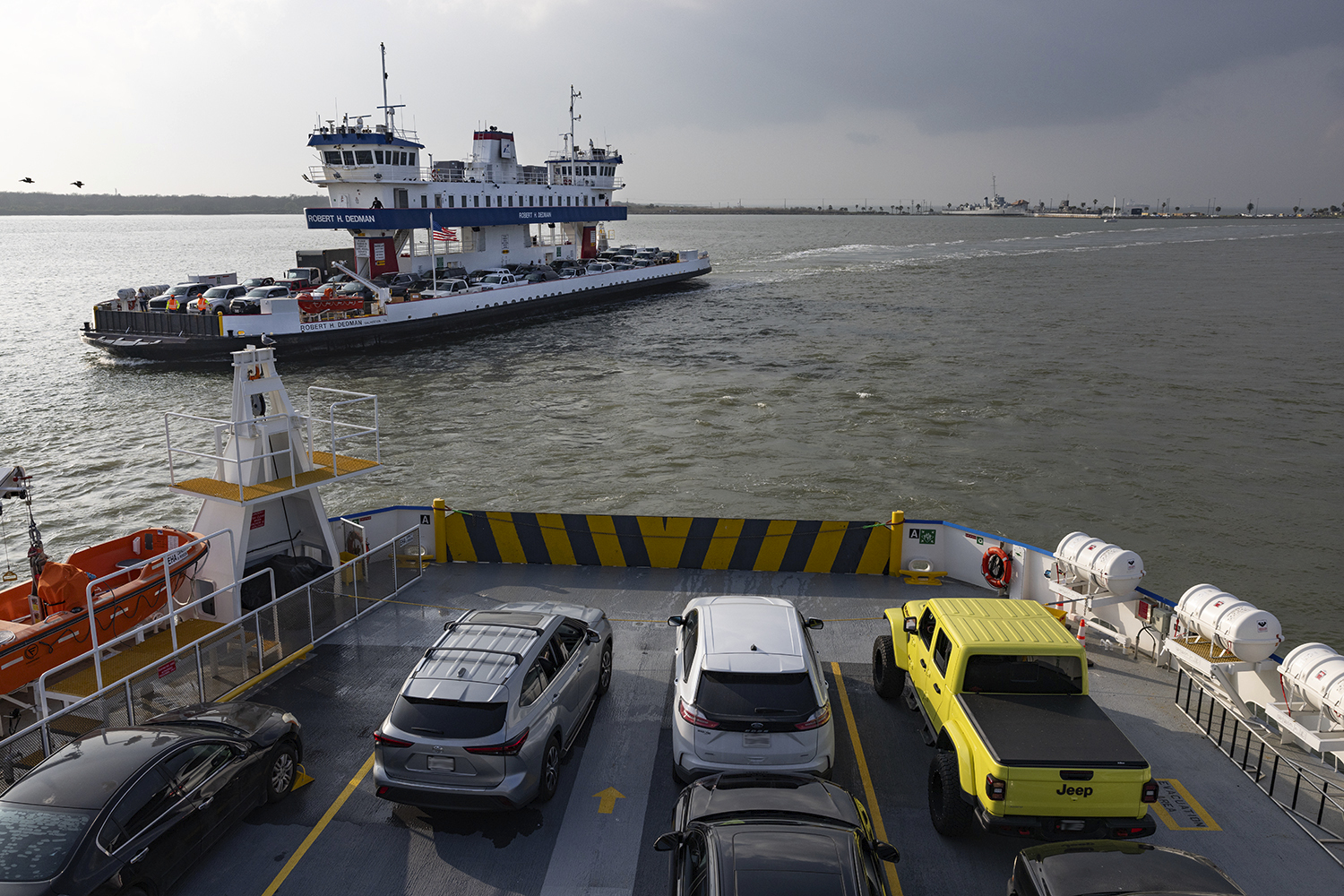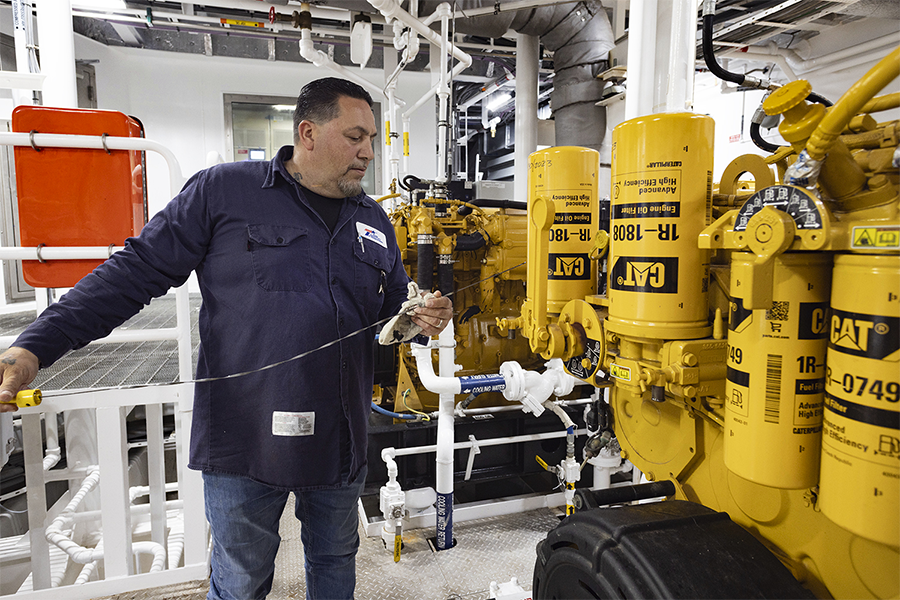
July 23, 2025
By Bailey Doucet
HOUSTON — From mountains to plains, TxDOT manages thousands of miles of roadway throughout the state, but it’s not just asphalt. On an ocean highway, ferries provide an important link for communities along the Gulf.
Passengers from throughout southeast Texas, and from areas much further, board the Galveston Ferry each day to go between Galveston Island and the Bolivar Peninsula. During the summer months, the number of trips picks up significantly as vacationers seek refuge from the heat and head to the beach.
Some have vacation homes in beach communities like Port Bolivar, Crystal Beach and Gilchrist. For others, the Galveston Ferry is necessary to reach jobs, school, hospitals and shopping.
Passengers may not realize the enormity of the operation and how much effort it takes each day to keep the ferry operating. The ferry system is much more than just a transportation vehicle but rather a body of work filled with courageous men and women who keep the ships afloat 24 hours a day, seven days a week.
TxDOT has a total of seven ferries. The number of operational ferries put into service each day depends on several factors ranging from time of year, volume of traffic and maintenance schedules. The goal is always to provide a safe and efficient transportation service while ensuring the fleet is well maintained.
Each ferry boat captain and boat crew work eight hours and make eight round trips per day. Each round trip includes making landings on both the Galveston and Bolivar sides five days per week. This equates to more than 4,000 landings per year for each captain and crew.
“This is an enormous feat on just one day and we do this over a span of 50 plus weeks a year,” said Galveston Ferry Operations Manager Elworth Wilcox.
Wilcox said the number of trips does not tell the full story until the annual number of ferry passengers and vehicles are considered.
“Roughly five million passengers and 1.5 million vehicles get on the ferry every year,” he said. “This continues to show how essential these boats are to Texas transportation.”
TxDOT’s other ferry system in Port Aransas also performs a vital job for travelers in the Corpus Christi area. Like the Galveston Ferry, the Port Aransas route runs on a 24/7 schedule, operating between two and six ferries a day. The route offers travelers on SH 361 a link across the Corpus Christi Channel between Aransas Pass, on the mainland, and Port Aransas, on Mustang Island.
Last year was a busy year for the Port Aransas system as the fleet carried 2.4 million vehicles and 3.8 million passengers.
Both ferries serve as vital transportation links that support regional mobility, tourism and emergency access, making them an essential part of the state’s coastal infrastructure.
More information on the both the Galveston Ferry and the Port Aransas Ferry is on the ferry boat schedules page.
